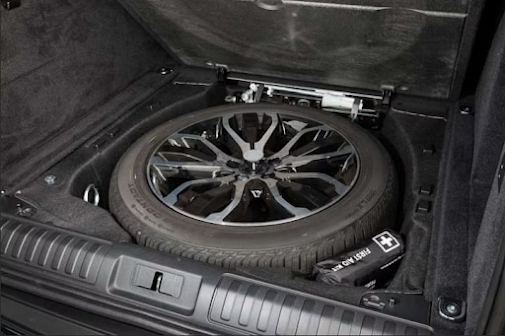Types of Tyre Damage And Their Causes
They must be inflated to the appropriate damage because they are in a hazardous location where they can be damaged by potholes, uneven wear, and road debris.
Punctures
Tyre damage that is most commonly known to occur is punctured. Large objects can puncture through a tyre if you're extremely unlucky, but most often, sharp objects like glass and nails are the source of punctures.
Although it's not always possible to prevent punctures and you should never swerve when driving, the best course of action is to move to either side of the road to get past any objects or debris you see. The best course of action when approaching debris is to coast over it without applying the brakes. When using brakes, the front tyres bear a lot more weight, which could cause them to collide with debris more forcefully than they otherwise would.
Even with brand-new tyres, punctures can happen. In certain cases, more than half of your car's weight can be concentrated on an area the size of a nail tip.
Except in a few cases, punctures can be safely repaired: A puncture repair won't hold if the puncture is on the sidewall or near the tyre's shoulder. A failed puncture repair may cause a blowout or an abrupt pressure drop.
Cuts
Cuts from road debris and sidewalls rubbing on curbs or rocks can occur in tyres. Cuts cannot be repaired in any way, which sets them apart from punctures.
The rub strip, also known as the sacrificial wheel protection strip, is one example of a cosmetically damaged area of the tyre where there is an exception. The tyre needs to be replaced right away if the cut extends to the tyre plies or if the metal is visible in the cut.
Cracks
Your tyres' rubber may deteriorate and harden with time and exposure to airborne oxygen.
While some minor surface cracking is normal, as tyres age, the tracks will get bigger and the tyres will become harder and more brittle.
For this reason, regardless of tread remaining, tyres that are five years old or older should have regular inspections for age-related defects.
Only avoiding direct sunlight and maintaining a protective sealant like tyre shine—neither of which are practical—can truly prevent tyres from cracking. Most tyres are removed from the car by the time age-related problems arise because the tread has already worn down significantly.
Bulges
A tyre's internal layers separating is indicated by any bulges on the tyre. Under no circumstances should a tyre with bubbles and bulges be driven on; instead, it needs to be deflated and replaced right away.
Bubble-filled tyres have a sudden, explosive release force. To put yourself or other drivers around you at risk is simply not worth it.
Irregular wear to the tread
It's inevitable for tyres to lose their tread during use. However, achieving uniform side-to-side tyre wear is essential to extending the life of your tyres. Inadequate tyre pressure is just one of the many problems that can lead to uneven tyre wear.
It is very simple and easy to set the proper tyre pressure. To increase the pressure in your tyres, most petrol stations have a compressed air hose.
It takes specialized equipment and qualified personnel to identify and address some causes of uneven tyre wear, such as
- An incorrect wheel alignment
- Imbalanced wheels
- Suspension parts that are worn out or damaged
A cheap gauge, available at any local auto parts store, makes it simple to measure the tread wear on your tyres. To determine the tread depth, you can also use a coin or ruler.
Primary Factors for Tyre Damage
Inflation Pressure
The air inside the tyre, not the tyre itself, bears the weight of the load. To ensure the tyre's performance, the proper inflation pressure must be maintained. The maximum load/pressure specification advised by the tyre manufacturer should always be reached and maintained.
Heat build-up
The worst enemy of tyres is heat, which is produced by a number of factors. A tyre expels a lot of energy as it repeatedly deforms and recovers while rotating under the weight of a vehicle and its load. Heat builds up when this energy is released, increasing the material's susceptibility to abrasions, cuts, and structural fatigue. Make sure the car only has the proper load capacity on it and that it is travelling at the appropriate speed.
Maintaining The Vehicles
The last but not least component of effective use is vehicle maintenance. Tyre damage can be severed by the machine's performance. Tyre life can be significantly reduced and vehicle operating costs can rise when routine maintenance is neglected.
Selecting the right tyre
- Your tyres' lifespan can be considerably increased by choosing the appropriate tread pattern.
- Variations in traction, cut, flotation, wear, and heat resistance are all intended to be produced by the tread pattern.
- There are several benefits and drawbacks to different tyre constructions, depending on your particular application: radial, bias, and solid.
- Tyre life can be affected by compound and TKPH, which measures Maxxis Tyres Ebbw Vale life.
- Utilize the appropriate loading capacity while maintaining a load-speed index.




Comments
Post a Comment